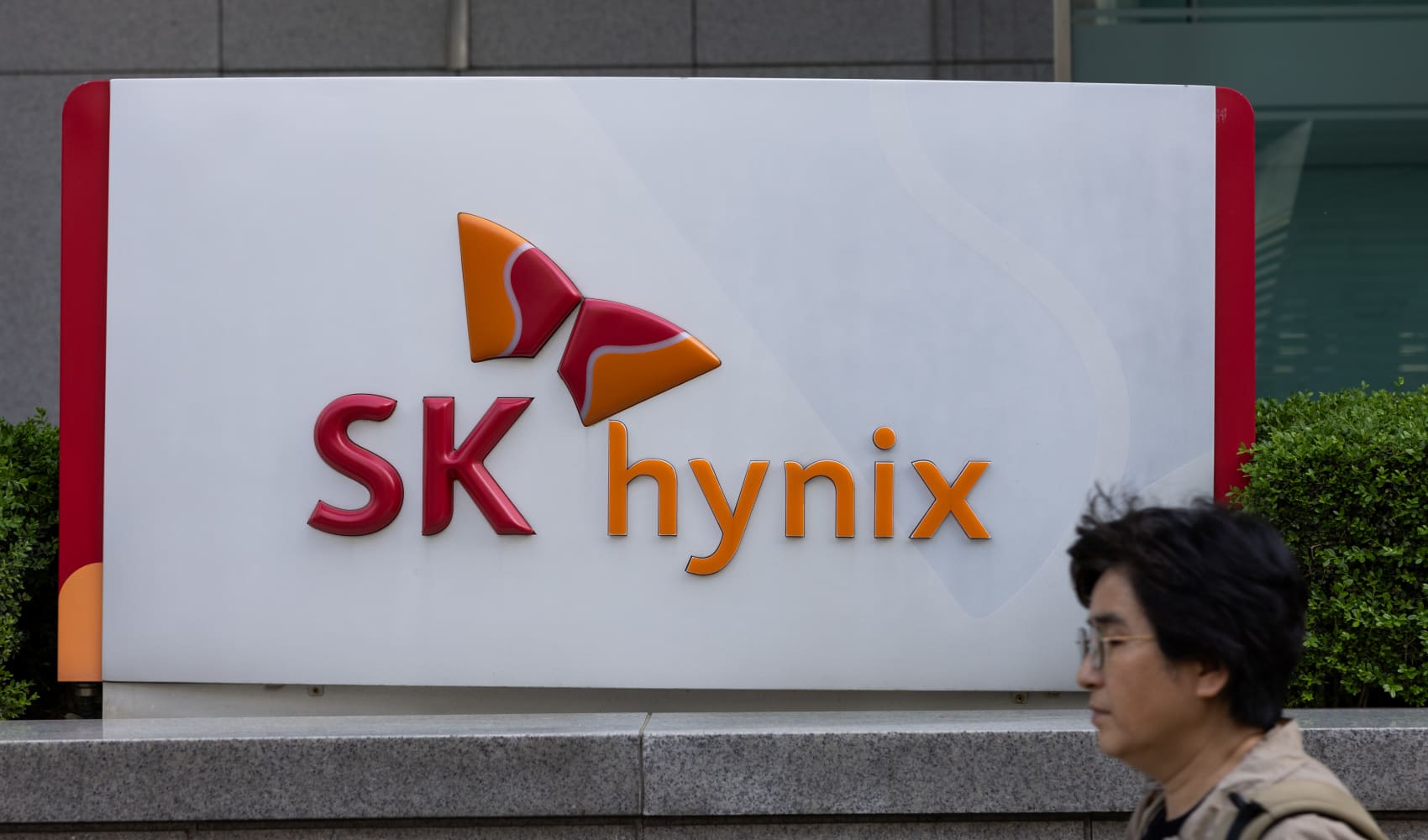
- A secret meeting between representatives of the International Longshoremen's Association and the USMX port ownership group was held on Sunday to make headway on the issue of port automation that needs to be resolved by Jan. 15 to avoid a new East and Gulf Coast ports strike.
- A document produced from the meeting and reviewed by CNBC indicates ports willing to pair any new technology with new union jobs, but it could also introduce new risks to a deal, with added labor costs threatening terms agreed to in October for a 62% pay hike for union workers.
- Formal talks are set to resume on Tuesday, and it remains unclear if the full port ownership group will support the new language on automation.
A secret meeting between key members of the International Longshoremen's Association and the United States Maritime Alliance was held on Sunday in an effort to help the dockworkers' union and ports ownership find common ground on the heated issue of automation and semi-automation. A document produced out of the meeting indicates a focus on the creation of new human jobs to complement any new port technology.
CNBC has learned that the eight-hour meeting took place ahead of the highly anticipated resumption of formal bargaining, and with a January 15 deadline to avoid a new strike by dockworkers. According to sources close to the talks who were granted anonymity due to the sensitive nature of the negotiations — talks had recently broken down over the issue — language on automation was drawn up to assist the full bargaining committee review process slated for Tuesday.
But the sources added that the language could lead to new concerns about added labor costs, and new risks to getting a comprehensive deal on wages and automation completed.
Get top local stories in Southern California delivered to you every morning. Sign up for NBC LA's News Headlines newsletter.
The meeting included individuals from port terminals where the technology at issue is already used, including rail-mounted gantry (RMG) cranes at container terminals in Bayonne, New Jersey, part of the Port of New York and New Jersey, and the NIT Terminal, part of the Port of Virginia. Among executives at the meeting were Paul Demaria, CEO of USMX; Kevin Price, president of Gateway Terminals; Joe Ruddy, chief operations officer of the Port of Virginia; John Atkins, president of GCT USA; and Anthony Ray, executive vice president of operations at Maher Terminals. Representing the union were ILA president Harold Daggett and his son Dennis, who is executive vice president of the ILA, and Virgil Moldonado, president of the NY/NJ chapter of the ILA 1588.
According to a document reviewed by CNBC, the agreement states that the ILA reserves the right to add union workers in the future to complement any new technologies and "there is a commitment by the parties to research and utilize all technology that would assist an operator in being more efficient and productive."
The document specifies that skilled human crane operators have proven their ability to work with the aid of modern crane control systems to handle port tasks where precision is required. The crane technology includes cameras and alignment guides, anti-sway technology for precise container placement, and motion-dampening controls.
Money Report
The document refers to semi-automated rail-mounted gantry crane operations "where humans control complex tasks while automation handles repetitive motions."
It also cites manual RMG operations in which union workers operate the cranes manually without automation. Loading positioning sensors, obstacle detection systems, and real-time feedback systems were also cited as tools that "enable human operators to achieve precision comparable to automation."
Even with the proposed language on automation suggesting that the USMX is willing to give in to some union concerns over jobs, port sources say critical details still need to be worked out.
Sources within the USMX are concerned about new labor costs that do not accurately reflect port needs and economics, and which will ultimately ripple through the supply chain and reach the consumer.
"The rub is, what are deemed as necessary jobs?" said a terminal operator. "Is the job truly necessary or is it a job being created for the sake of adding a worker?"
"These extra jobs are paid by increasing the price of services paid by the shipper," the terminal operator said. "These costs are then passed onto the consumer by the shipper. It's the definition of inflation."
The ILA declined to comment on the meeting.
It remains unclear if the full USMX bargaining team will agree to document language on automation or risk another strike.
"We are at an inflection point," said a member of the USMX. "If either side cannot come to an agreement and there is a strike, it is a roll of the dice for either side to see if a better agreement could be carved out if there was government intervention."
President-elect Donald Trump recently voiced strong support for the union position on automation.
The USMX member said that if the proposed terms on automation, requiring any new port technology to be matched by new jobs, are accepted by the full USMX, then the tentative 62% wage increase that the USMX agreed to in October to end the first strike "should be off the table."
"Keeping automation at status quo arguably eliminates the ability to pay for the increase," the USMX member said. "So this is part of the internal discussion and will be part of the carriers' consideration on whether to accept the deal discussed yesterday."
The working document states that if a mutual agreement cannot be reached on the use of what is defined as "Operator Assisted Technology," the subject would be referred to what is known as a technology committee process used by the union and ports — which consists of a co-chairmen and five additional members from each side, as well as Harold Daggett, along with his two sons, Dennis and John. That is the final step before arbitration, if necessary.
While the personnel additions tied to new technology would be subject to local union chapter bargaining, the final approval would come from the ILA's national office.
"All of these decisions are controlled by the Daggett's in the end," said the terminal operator. "This contract continues to increase Daggett's leverage in the union by deciding how many people get hired and which one of those lucky enough to be hired gets the biggest paycheck."






